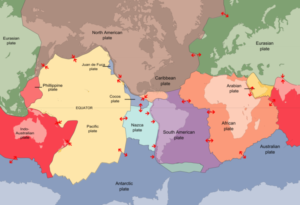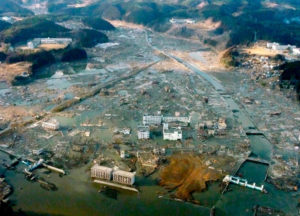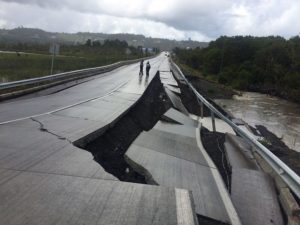Moon may be a small part of a complicated puzzle, researcher says

The moon may be the cause of some things that happen on Earth, but earthquakes aren’t one of them, a new study suggests.
There’s been an ongoing debate as to whether or not more earthquakes occur when the moon’s tidal forces — its pull — is strongest.
The theory is the alignment of the sun, Earth and moon — during a full or new moon — pulls Earth’s tides out and redistributes the mass on the planet. This, the proponents believe, causes more stress on the tectonic plates, which in turn move, causing an earthquake.

Susan Hough, of the U.S. Geological Survey, set out to determine if there was any statistical evidence to support the theory
Hough looked at 204 earthquakes that were magnitude 8 or higher, dating back to the 1600s, and found there was no evidence to suggest that earthquake rates are influenced significantly by the position of Earth relative to the sun or moon.
That’s not to say there weren’t any patterns, however.
For example, the highest number of earthquakes that occurred on a particular day happened seven days after the new moon. At this point the tides would be at a minimum, which wouldn’t fit with the belief that the moon and earthquakes are linked.
“My statistical analysis showed that this apparent signal is not statistically significant,” Hough said. “But there’s so much lore about earthquakes and full moons; I was a little surprised that earthquakes have bunched up on a day about which there’s no popular lore.”
Hough then tested for any significance to the patterns that were showing up in the data by randomizing the dates of the earthquakes. The patterns that showed up were similar to the ones in the original data. It’s similar to flipping a coin, she notes: you may sometimes end up getting six tails in a row.

The Japanese town of Minamisanriku was flattened by massive tsunami following Japan’s strongest recorded earthquake on March 11, 2011. The earthquake occurred when the moon was a waxing crescent. (Kyodo/Reuters)
So why do some people believe that earthquakes occur during a new or full moon?
“I think the lore persists for a number of reasons,” Hough told CBC News. “One is that people find patterns in random data, like seeing animals in the clouds. When a big earthquake occurs on a full moon, or the shortest day of the year, people tend to ascribe significance to the coincidence. When big earthquakes occur that don’t fit a pattern, it tends to slide right past us.”
The other is that the tidal forces do influence the ground and ocean, but “just in a very small and complicated way,” she said.
A 2016 study done at the University of Tokyo found a link between the tidal stresses of the moon and the movement of tectonic plates. Of the 12 earthquakes Satoshi Ide and his team studied that were larger than magnitude 8.2, nine occurred on days of a full or new moon.
While the study doesn’t conclude that the moon causes earthquakes, it suggests that the tidal forces of the moon could be one of many factors that lead to stronger ones.
More data needed
Honn Kao, a research scientist at the Geological Survey of Canada, said that even with this new research the debate is “far from settled.”
The reason, he said, is because of the small data set in research done by Ide and Hough. What’s required is an examination of earthquakes smaller than the magnitude 8 or 8.2 that those studies examined.

“From Ide’s study we’ve already learned that when you get down to smaller events, the relationship doesn’t appear to be very clear,” Kao told CBC News.
That’s not to say that the moon’s tidal forces have no effect on the solid ground at all, both Kao and Hough note.
“It makes sense that tidal forces might in some cases be the proverbial straw that breaks the camel’s back,” Hough said. “But the studies note that the modulation is small, such that the effect is of no practical use for prediction.”
Kao said that it’s unlikely this study will convince those who believe in the correlation between the moon and earthquakes.
“The debate continues,” he said.


